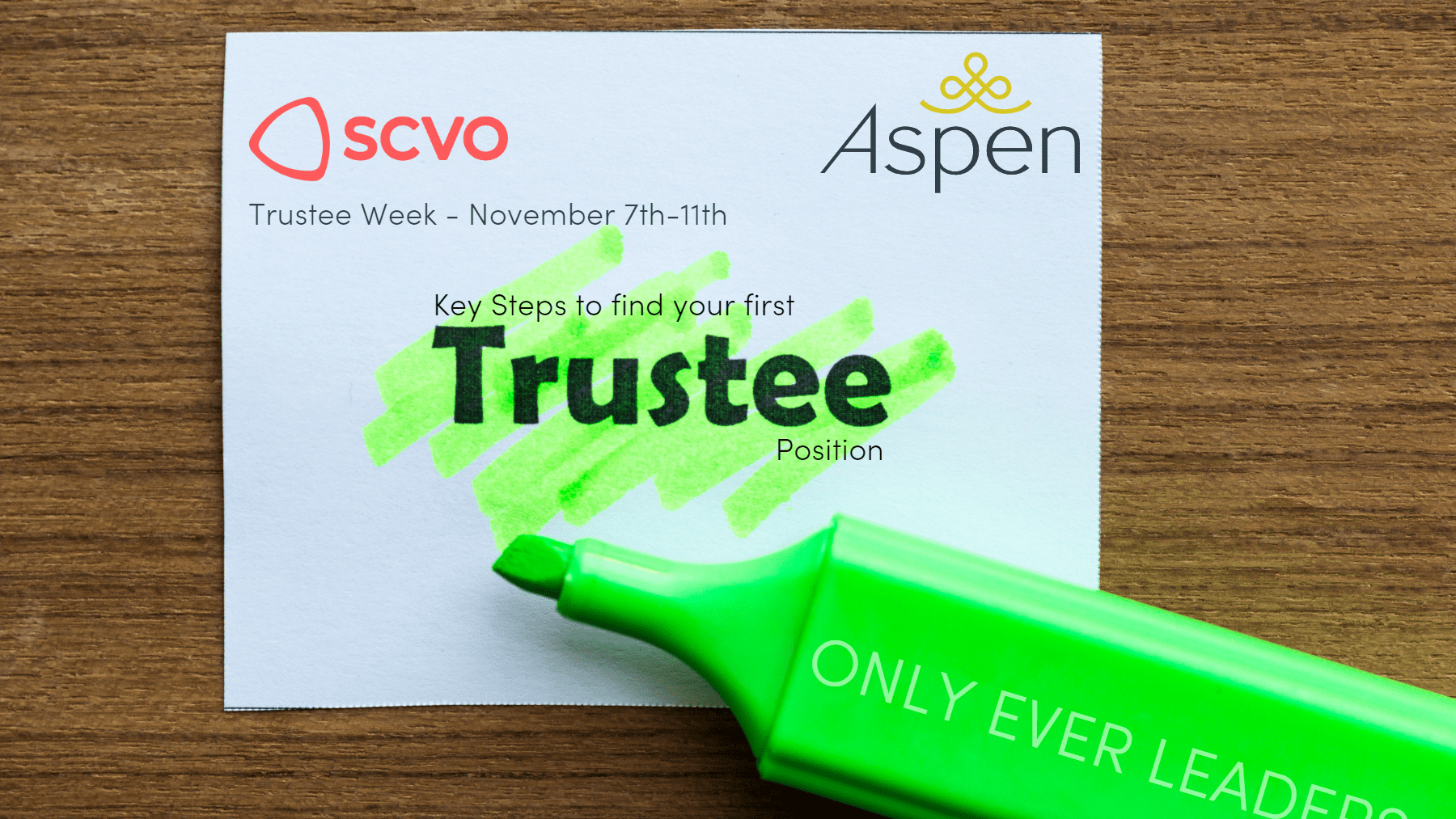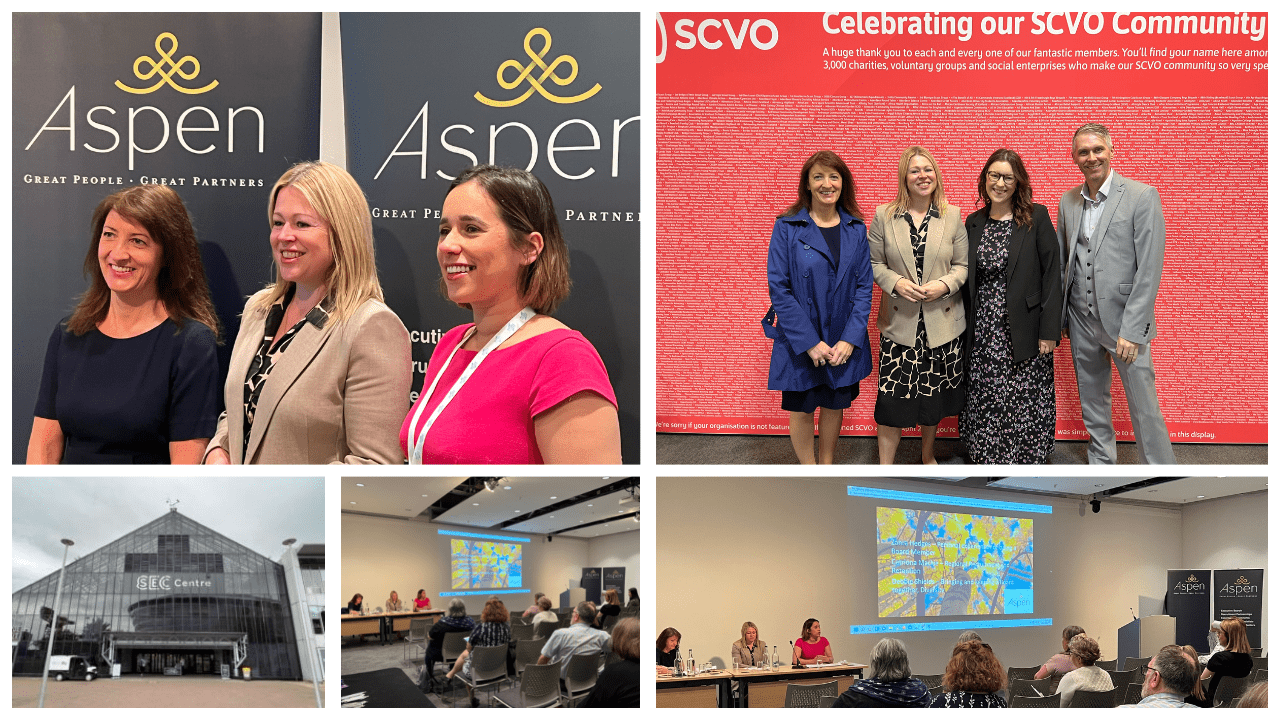POSTED Tuesday 08-11-22
Key Steps to find your first Trustee Position

Everyone has volunteered at some point in their lives. To either get some work experience, kick start your first CV entry, or give something back to an organisation that has supported you or your family at some point. Volunteering opportunities come in all shapes and sizes, so there will always be something for everyone.
What is often overlooked is the opportunity to volunteer professionally and robustly as a 3rd sector organisation or a not-for-profit Trustee. Aspen People are very much aware that the person profile, in the past, has been that of a white, older, middle-class male. For many organisations in the past, this approach could have worked. After all, being a Trustee is about having the charity’s best interest, governance standards and strategy at heart, right?
Unfortunately, in these more modern times, when charity boards are only partially representative of the society they are supposed to reflect, it is likely to affect the charity negatively. So it’s not surprising that there is a call for more diversity on Trustee boards. This was a central discussion point from Debbie Shields and Catriona Mackie. They returned to SCVO‘s The Gathering in June after what felt like such a long time away from in-person events. Zahra Hedges of Winning Scotland also joined Debbie and Catriona.
As Board recruitment specialists, we discussed the importance of recruitment, retention and diversity in the Boardroom. Zahra, a Trustee of Sacro, talked about her personal experience in this area and shared ideas about what to do and avoid.

By becoming more diverse, a charity recognises that people have more to offer than just (a particular type of) work experience. More diversity on the trustee board can result in fresh input, energy and different skills. Although becoming a trustee might seem a bit daunting initially, you should remember that you have many skills to offer. Read on to find out what the key steps to your first Trustee position are.
What are you passionate about?
Rather than researching what a trustee position is right off the bat. Consider what you’re passionate about. What cause do you care strongly about? Think about the online articles, documentaries and public lectures you found interesting. Think about heated discussions you had with your friends or family. Also, remember to think of the organisations where you’ve worked or volunteered, even if it was a long time ago.
What issues pique your interest, and what would you like to change in your community or world? Try to drill this down to tiny bite-sized pieces in terms of the scale, size and service delivery approach. For example, if you’re interested in making creative arts more accessible to 0-5 years. Is this on a local, national, or even global scale? Next, consider what type of organisation attracts you most. Are you, for example, more drawn to large advocacy charities or small community-based charity that provides creative arts for children?
For some people, this step is straightforward. Others might need help to narrow down what they enjoy working on. If this is the case, you can also turn it around: eliminate what you need to find interesting enough. Discussing with others can also help you get a clearer perspective on what you really care about. Don’t be afraid to take your time with this step. After all, you’ll be investing time and energy to work on this cause if you become a trustee.
What does it entail to be a trustee?
So, that’s a tricky part, completed and in the bag. But it’s good to put what cause or causes you really feel passionate about on paper!
Next, you’ll need to look into what it exactly entails to be a trustee. What are your duties and responsibilities? What are the legal liabilities? Again, the SCVO has lots of helpful information and events on its website.
You can also reach out to Trustees via email or Linkedin and ask if they’d be willing to have a call or meet for a coffee so you can get more insight into what it’s like to be a Trustee. Be aware that the charity’s size often influences a Trustee’s duties. Although every Trustee will execute specific tasks, your role will likely be more hands-on in smaller charities.
If direct contact with the charity’s beneficiaries regularly is more something for you than developing overarching strategies, then becoming a trustee might not be something for you. However, that is different from saying that the two can’t go together. Trustees often also volunteer ‘on the ground’ to get a better impression of the work and needs of the organisation. Knowing what goes on in the organisation and understanding the beneficiaries’ needs can help you develop appropriate short and long-term strategies and solutions. Moreover, you’re more likely to get the staff on board if a change of direction is needed.
Suppose you decided that a Trustee role doesn’t match what you enjoy doing; that’s okay. What is important is that you’ve found the cause you care about, so you should consider volunteering in a different role.
Start your Search
By this point, you know what you’re passionate about and have decided you still want to become a Trustee. Then, you can start your search for a fitting Trustee role. Finding a trustee position can be lengthy because they’re often not widely advertised. However, don’t let that put you off! An excellent place to start looking is a website called GoodMoves.
You can “Google” Trustee Roles and your town or city. Because you know what moves you and what charities fit your profile, you could check their websites directly. Even when you don’t see Trustee positions listed, it’s worth dropping them an email or a phone call to ask about any available Trustee positions and information on when they’re likely to be recruiting again. This proactive approach can prove successful as many Trustee positions are only sometimes (widely) advertised.
 Of course, there are organisations like ourselves that take great pride in being able to provide a complete recruitment service to place new Trustees in charities. Sign up to be part of our executive talent database and always be informed of new Trustee opportunities with are working on.
Of course, there are organisations like ourselves that take great pride in being able to provide a complete recruitment service to place new Trustees in charities. Sign up to be part of our executive talent database and always be informed of new Trustee opportunities with are working on.
For example, we are currently looking for Trustee applicants for the following organisations. Research Data Scotland, East Renfrewshire Culture and Leisure Trust, and The Royal Scottish National Orchestra (RSNO). We also have a few more opportunities that will soon be going live.
We take great pride in ensuring that any marketing treatments we publish reflect the stellar efforts of our Talent and Client Partners and the Consultants and Directors. Our collective approach is arm-in-arm, driving towards the outcomes that best match the client and candidate requirements.
Prepare your Application
You have found the perfect role! Now it’s time to prepare your application to land that first Trustee Position. Google, website search and take a deep dive on social media to find out as much about the organisation as possible. Being a Trustee comes with responsibilities, so you should know what you’re getting yourself into. That means asking for access or a show of their annual reports. Often these are found on their website.
Your charity-specific research did not put you off? Good! Then it’s time to start writing your Cover Letter and tailoring your CV. Tip; keep your CV document to 2 pages (3 max) rather than create a new document for a Cover Letter. Please start a new page after your CV and start there. Keep your Covering Letter to no more than three pages. The perfect situation is to have a 2-page CV and a 2-page Cover Letter. If you need more, don’t worry about it. Tell your story. We have a great three-part blog on writing effective cover letters. Check out the first part here.
We hope you have enjoyed this Key Steps to find your first Trustee Position blog. If you have any questions generally about the opportunities that we have, contact the named person in the advertisement or for some advice on Trustee roles, contact Debbie Shields at dshields@aspenpeople.co.uk